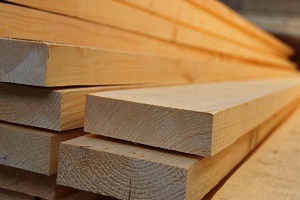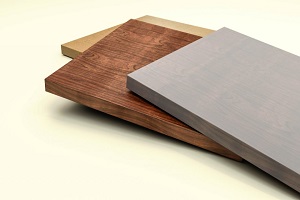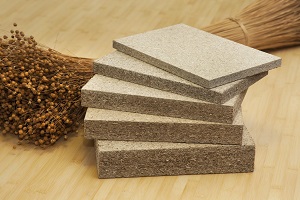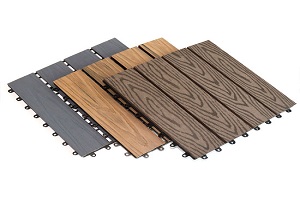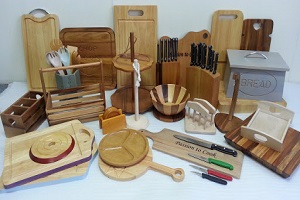Get a Project Report
Top Lucrative Business Ideas for Startups
GLOBAL WOOD INDUSTRY:
The wood industry is made up of businesses that create, manufacture, and sell wood products such as plywood, wood-plastic composites, and plastic lumber. The degree of activity in end-use industries, such as building construction, and the housing market meltdown, which has a negative impact on the wood industry, determine wood demand. The recovery in the housing market, as well as rising demand from the automobile industry, are propelling the wood industry forward. To increase profitability, stakeholders in the global wood sector will need to focus their efforts on optimising the use of sustainable, managed forest resources in the future. Manufacturing process efficiency and value recovery will also help to reduce production costs, giving flexible industry companies an advantage. Improved wood quality, improved forest bio-security, pest management, and product and process innovation are all crucial elements for enterprises looking to gain market share.
PARTICLE BOARD:
The particle board market is expected to expand at a rate of 6.1 percent each year. Particle board, often known as chipboard, is created by pressing and extruding wood chips, sawmill shavings, sawdust, and a synthetic resin or other suitable binder. Affordability, ease of installation, and great density and homogeneity are some of the reasons that have influenced market demand. Particle board is the lightest type of fibreboard and is less strong than even medium-density fibreboard, despite its density.
PLY BOARD:
The global plywood industry is predicted to increase at a 5-percent compound annual growth rate (CAGR). The global plywood market is fueled by the building industry’s expansion. The Asia Pacific area is the most important market, with the biggest market share. India and China are the largest plywood markets in the Asia Pacific area, owing to increased population growth and rising disposable incomes in both nations. Manufacturers’ rising technological improvements to lower manufacturing costs, increase profitability, and improve the quality of plywood products are also helping the sector.
WOOD PLASTIC COMPOSITE:
The global wood plastic composite market is predicted to develop at a 12.4 percent compound annual growth rate (CAGR). Rising demand for sustainable construction materials, as well as an increase in restoration and repair operations in the residential sector around the world, are driving the market. When compared to traditional wood products, wood plastic composite has superior durability, bending strength, shear strength, low moisture content, and low water absorption. Because of these characteristics, it may be used in rails, windows, doors, outside siding, fencing, flooring, interior moulding, and landscaping materials. As a result, end-users increasingly prefer wood plastic composite goods to traditional wood products. The vehicle category drives the market even more. Because wood-plastic composites are widely utilised to reduce vehicle weight, new innovations in the automotive sector are expected to have a direct impact on the market. Emerging markets with high growth potential are projected to assist the expansion of the WPC industry in the coming five years. Consumers are turning to wood-plastic composites to help save the environment since they are comprised of recyclable materials and produce less harmful waste. Because the wood used in wood-plastic composites is a byproduct of the furniture industry, it helps to decrease deforestation.
MEDIUM-DENSITY FIBREBOARD (MDF):
The global market for medium-density fibreboard (MDF) is predicted to develop at a CAGR of 8.64 percent over the next five years. While the residential sector is the most common application for medium-density fibreboard, the commercial sector is likely to grow in the future years as emerging nations continue to industrialise. The product is used in commercial applications such as millwork, moulding, and edge shaping, to name a few. The medium-density fibreboard (MDF) business, which is used in wall-linings, decorative facades, flooring, and window boards, among other applications, is predicted to benefit greatly from new building. MDF stands for medium-density fibreboard, which is a type of panel made from wood fibres that have been processed in a defibrator and combined with a resin binder and wax. China, the United States, and India are estimated to account for about 57 percent of the construction industry’s expected growth. The construction industry in the United States is recovering from the recession and seeing a solid increase in new construction projects.
INDIAN MARKET:
In India, the furniture market is dominated by wooden furniture. In India, the demand for wooden furniture has skyrocketed. The natural resources of numerous tree species abound in India, and the wooden furniture industry employs both indigenous and imported wood. India is one of the world’s largest importers of timber. However, the furniture industry in India contributes only 0.5 percent of the country’s Gross Domestic Product (GDP). In recent years, the appeal of traditional furniture has led to a rise in demand for wood-based furniture. Teak, sandalwood, sheesham, ebony, walnut, sal, red cedar, and rosewood are some of the most common woods used in Indian furniture. To react to swift changes in the furniture market, India’s furniture market is transitioning from disorganised to organised. Kerala, Punjab, Andhra Pradesh, West Bengal, Uttar Pradesh, and West Bengal are the most important states in India for the wood furniture market. The home sector is the key driver of demand for wooden furniture in India. In comparison to the commercial sector, the home sector makes a significant contribution to the demand for wooden furniture. This is due to the fact that people use wooden furniture in their houses for a variety of purposes, including cupboards, decorating, and other things. This is increasing demand for wooden furniture such as sofa sets, dining sets, beds, and chairs, which are likely to increase rapidly in the future years. Aside from that, demand for engineered wooden furniture is increasing in big cities like Delhi, Bangalore, Mumbai, and others. The residential real estate sector has also seen rapid growth in recent years, owing to rising population and desire for cheap housing, which is expected to drive up demand for wooden furniture in the market.
WOOD BASED PRODUCTS MARKET:
The worldwide wood products market is predicted to increase at a CAGR of 6.8% during the next five years. With 39 percent of the market, Asia Pacific is the largest region in the worldwide wood products industry. North America is the world’s second-largest wood-products market, accounting for 27% of global sales. In the worldwide wood products market, Africa is the tiniest region. Tracking and tracing technology have been implemented as a result of rising demand for supply chain transparency and rigorous government laws affecting the timber industry. To preserve openness in their timber supply chain, many wood companies have created their own tracking systems. Wood firms and government agencies are choosing electronic tracking over paper-based methods, and technologies including radio-frequency identification chips, barcodes, and advanced traceability software are being deployed.
TOP PLAYERS WORLDWIDE:
- Andersen Corporation
- Celulosa Arauco y Constitución.
- Century Plyboards India Ltd.
- Georgia-Pacific Corporation
- Godrej Interio (Godrej & Boyce Mfg.)
- Greenply Industries Ltd.
- Hindalco Industries Limited
- Ikea India Pvt Ltd.
- Indroyal Furniture Pvt Ltd.
- Kingswood Group of Companies.
- Masco
- Merino Industries Ltd.
- Nilkamal Ltd.
- West Fraser Timber Co Ltd
- Weyerhaeuser Company

